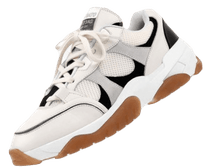你见过一个产品的useful but turns out to be a flop? Or on the other side of the coin:a target audiencethat’s incredibly excited for a new product to launch, only to be disappointed when they finally get their hands on it?
These are two prime examples of failing to achieve product-market fit. In a nutshell, product-market fit is when a brand creates a product that meets the needs and wants of its customers, with those customers recognizing the value and wanting to actually buy the product and use it.
So what’s the secret to achieving product-market fit? While there’s no single right way, there are some general guidelines that can help boost your chances. In this article, we’ll look at some top tips to help you get there.



What is product-market fit?
Product-market fit happens when your product clicks with a wide range of customers. You likely won’t experience a sudden aha moment. Instead, you’ll see growing customer interest. This interest serves asvalidation. It shows your product either solves a problem or fills a need.
Marc Andreessen, the entrepreneur who introduced the term “Product-market fit,” has his own take. According to Andreessen, you reach product-market fit by identifying a promising market. Then, you deliver a product that satisfies its demands.
→ Click Here to Launch Your Online Business with Shopify
Why is achieving product-market fit important for a business?
Achieving product-market fit is a strong early sign of business success. It drives:
- Organic growth:A well-fitted product naturally attracts new customers, increasing sales without costly advertising.
- Customer loyalty:Deep user research helps tailor your product to specific needs, strengthening customer bonds in the process.
- Market recognition:When satisfied customers talk, your brand gains visibility and status in the industry.
Each benefit amplifies the others, creating a self-reinforcing cycle of growth and market presence. This way, you sidestep heavy ad spends and sluggish growth, relying instead on organic reach and customer advocacy.
What is an example of product market fit?
One example that nails product-market fit is the iconic little black dress. It clearly fits into the well-established category of women’s evening wear. People have straightforward expectations for it: It should be versatile, flattering, and enduring. The little black dress consistently meets these criteria. As a result, it has become a wardrobe essential for many, confirming its strong fit with market needs.
5 steps to find product-market fit
The path to determining product-market fit isn’t always straightforward. You’ll likely encounter some unexpected twists and turns along the way—but if you’re covering the main bases, you should be set up for success in the long run. Let’s look at some of those main bases to help you determine product market fit.
1. Understand the dynamics of product-market fit
Product-market fit is a complex concept. You could say it exists on a spectrum, with different types of products facing different types of challenges.
For example, consider a completely innovative product that doesn’t already exist in the market versus a product that’s more common but isn’t differentiated from its competitors. These products will have unique obstacles to achieving product-market fit: The first might have more challenges establishing a target market, while the second might need to focus on making the product special.
In the end, you’ll need to account for both the product and the market. Does the product offer true, unique value for your target customer? And does the target customer recognize that value enough to make the purchase and use it the way it’s intended?
2. Get customer feedback early to validate your product idea
One of the biggest mistakes that entrepreneurs make is to build out their product and business completely without ever testing it in the market—or even stopping to domarket researchto make sure that the target market is interested in their idea in the first place.
You can do this through things like one-on-one interviews with your target customers, focus groups, surveys, and tapping into online communities like social media and forums. Kickstarter is another great way to prove your concept: if you invest in the marketing to get your Kickstarter pitch seen, you’ll have pretty clear data on whether people are interested or not.
Coolest Coolerfound success with Kickstarter, becoming one of the highest-funded campaigns ever. The founders set their original funding goal as $50,000—and ended up with an incredible $13 million in pledges. It’s not surprising: the campaign’s cooler was much better than the others on the market, with innovative built-in features like a blender, waterproof Bluetooth speaker, and USB charger.

3. Start with a minimum viable product (MVP)
The ideal approach is to create a minimum viable product (MVP), which is a version of your product that checks off the core boxes for features and functionality but doesn’t have all the extra bells and whistles. This way, you can know quickly if people even want the product, or if you should make some more changes before the full-scale launch.
With an MVP, you can start selling to your market early, get their feedback and see if you actually make sales, and use all that data to improve your product, if needed. You might also get opportunities to identify underserved customer segments that might be interested in what you have to offer. You can generate early interest by using smaller-scale marketing and sales techniques, like organic andword-of-mouth marketing.
4. Be strategic about your brand positioning
你要确定你的听众感知你的brand the right way. Pay special attention to your product and value proposition. What’s the key benefit you can provide? Is it based on cost, quality, or convenience? How do you stand out from competitors and similar products that are already in the market?
Dollar Shave Clubis a classic example of product-market fit. The brand innovated an existing traditional product and snagged customers away from it, completely disrupting that market.
Customers were annoyed by overpriced shaving supplies. When Dollar Shave Club launched, offering high-quality and low-cost supplies that could be delivered to a customer’s door every month, they jumped at the opportunity. Dollar Shave focused on value and convenience in its brand positioning, and customers saw immediate value. It was a raving success.

5. Be flexible and ready to change
When you’re tapping into the market’s opinions early and often, it’s common for entrepreneurs to hear things they don’t really want to hear. For example, customers might say they don’t like certain features or wish some things were different. This could mean big changes to your original plan.
While it might seem like a hassle or a drawback, don’t ignore this feedback. It’s best to change early to avoid even bigger problems down the road, like a product nobody actually wants. This iterative, data-informed approach can mean the difference between a massively successful product and a complete flop.
帮自己一个favor-don不能失败。
How to measure product-market fit
While there’s no universal KPI to measure product-market fit, a combination of qualitative and quantitative metrics can offer valuable insights. Make sure to analyze the following:
Press coverage:Making it into the headlines? Good press can amplify your reach, but make sure your product is ready for the limelight in order to leverage it effectively.
Demand:Are people queuing up? Whether it’s Kickstarter backers or waitlists, sustained demand points toward a product that’s achieved product-market fit.
Customer lifetime value (CLV):A growing CLV means you’re delivering sustained value. Your product isn’t just a one-time fix—it’s part of your customers’ ongoing journey.
Cost per acquisition:Crunch the numbers. What’s the cost to win a new customer versus the value they bring? If that balance sheet tilts in your favor, you’re on track to success.
Net Promoter Score (NPS):This one-question survey gauges customer loyalty. A rising NPS suggests growing satisfaction and word-of-mouth potential, which can be a good foundation for product-market fit.
Growth rate:Rapid growth in profits or customer base is a robust indicator of product-market fit. It shows your product is catching on and meeting demand.
Market share:Securing a significant portion of the market sales? That’s a good sign. A good market share validates your product’s fit in the space.
On the path to product-market fit (and a successful business)
Some entrepreneurs and business owners will be lucky and nail product-market fit on their first shot. But this is more of an exception than a rule. Achieving product-market fit is often a journey that will take you to some unexpected places.
What’s most important is that you’re approaching it with an open mind and your ears on the ground. It’s absolutely critical to do your market research, listening to your target market every step of the way and leaving room for changes when the data strongly suggests it.
When you put your target customers first, you’ll be in a much better position to give them a product they truly love. And then you’ll have a beautiful win-win.






